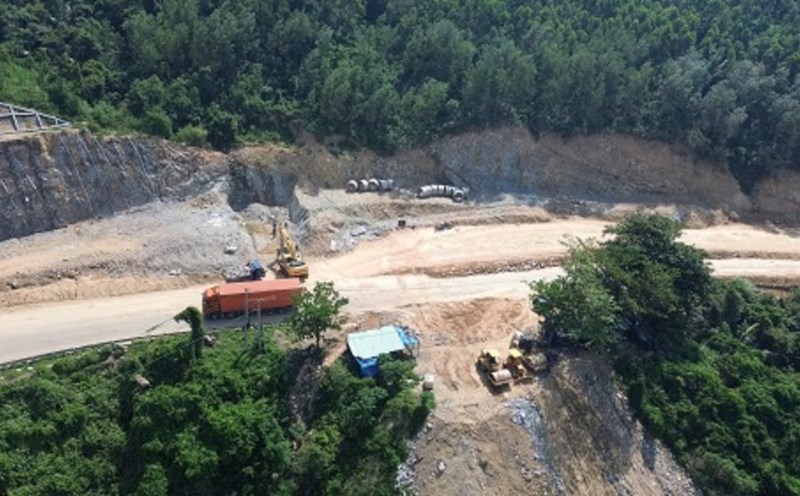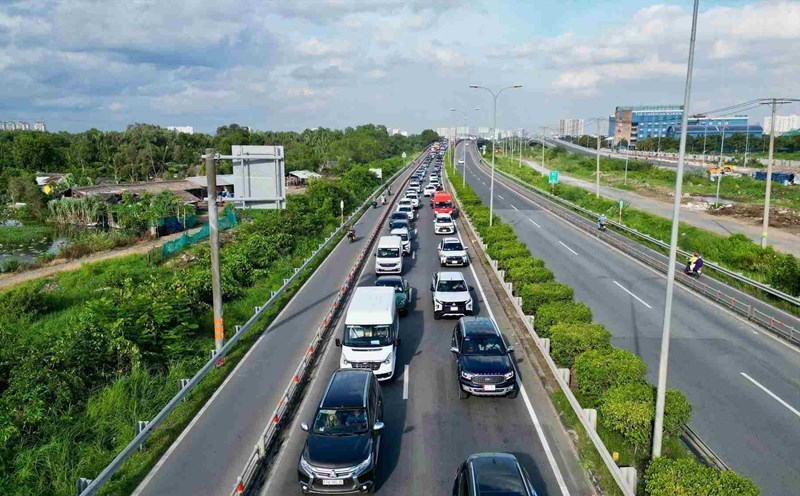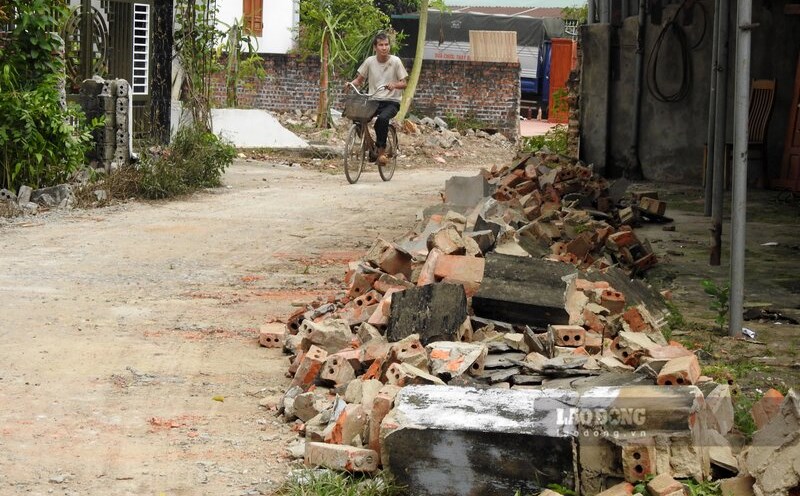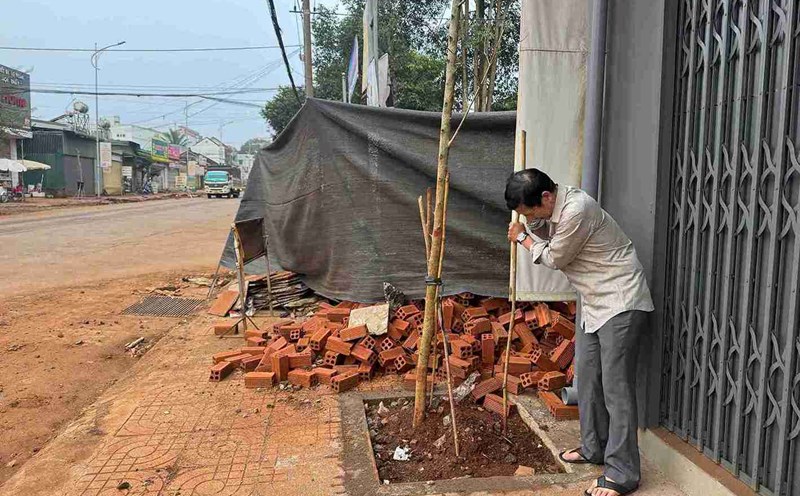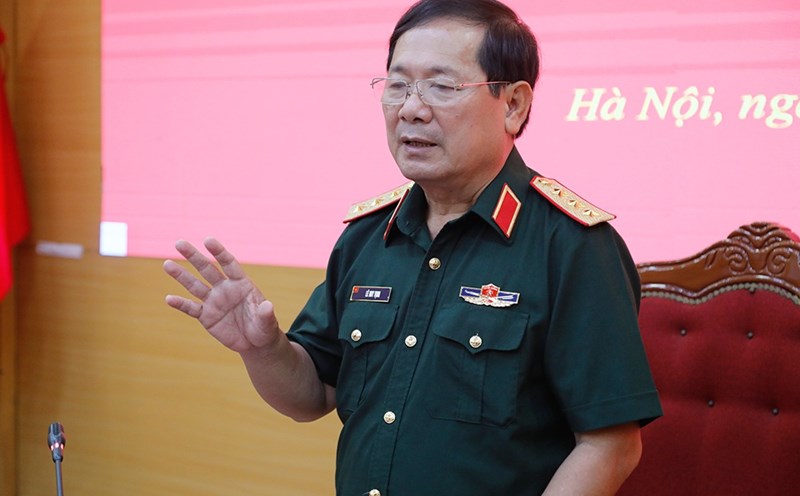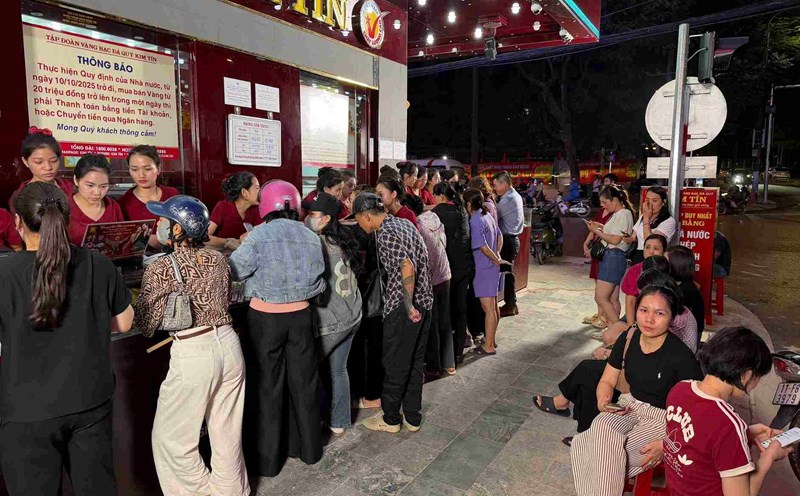Forming a modern transport network
According to the Resolution of the 1st Ho Chi Minh City Party Congress, the city will focus on developing synchronous infrastructure, connecting with Dong Nai, Tay Ninh, Dong Thap, Lam Dong.
Chairman of the Ho Chi Minh City People's Committee Nguyen Van Duoc said that in the next 5 years, the city will focus on completing three strategic belt routes including Ring Roads 2, 3 and 4. Ring Road 2 is 64km long, planned nearly 20 years ago but is now only about 80% closed. The remaining sections from Pham Van Dong - Go Dua, Phu Huu - Vo Nguyen Giap, Vo Nguyen Giap - Pham Van Dong will be completed in 2027.
Ring Road 3 is more than 76km long, with a total investment of nearly VND 75,400 billion, expected to open to traffic on June 30, 2026. The 207km Ring Road 4, passing through Ho Chi Minh City, Dong Nai, Tay Ninh, will be implemented from the end of 2026 and completed in 2028.
Also during this term, Ho Chi Minh City will complete and put into operation 5 new expressways. The Ho Chi Minh City - Moc Bai Expressway (51km, capital of more than VND 19,600 billion) started construction in early 2026 and will be completed by the end of 2027. The Ho Chi Minh City - Chon Thanh Expressway (57km, capital of nearly VND18,900 billion) is expected to be completed in the 2026 - 2027 period.
The Ben Luc - Long Thanh Expressway (57.8km, capital of VND 29,500 billion) - a strategic connecting route between the Southeast and Southwest regions will be completed in 2026. Finally, the Long Thanh - Ho Tram expressway (42km, capital of about 20,000 billion VND) will be submitted for approval in 2025 and started construction in the first quarter of 2026.
In addition, Ho Chi Minh City and Dong Nai jointly invest in three large bridges including Cat Lai, Phu My 2 and Dong Nai 2, with a total capital of nearly VND52,000 billion.
The city also implemented two important projects connecting Tay Ninh: Vo Van Kiet Street (14.6km, capital of nearly VND194,400 billion) extended to the Tay Ninh border and the new Northwest route (10km, capital of VND8,800 billion) connecting from National Highway 1 to Provincial Road 823D, opening a new development direction to the Northwest.
Ho Chi Minh City also deploys two routes along the Saigon River to expand urban development space along the river axis. Route 1 is 78.2km long, stretching from the border of Tay Ninh province to the old Can Gio district. Route 2 passes through Binh Duong area (before the merger), with a length of about 98.2km.
In parallel with road infrastructure, Ho Chi Minh City identifies urban railway and freight rail as the "backbone" of the modern transport system. The city will deploy the Bau Bang - Cai Mep route of 127km (capital of 153,000 billion VND), speed of 160km/h for passenger ships and 120km/h for cargo ships, while speeding up the progress of the Thu Thiem - Long Thanh route directly connecting Long Thanh International Airport.
The Ho Chi Minh City - Can Gio high-speed railway line, over 48km long, is expected to start construction this year and be completed in 2028. 7 metro lines will be started simultaneously in the next 5 years. In the aviation sector, Ho Chi Minh City will upgrade and expand Con Dao airport.
Removing bottlenecks to capital sources and land
Chairman of the Ho Chi Minh City People's Committee Nguyen Van Duoc affirmed that the city is determined to basically solve the traffic congestion problem by 2035, thanks to the synchronized network of beltways, highways and metro, creating a foundation for a smooth and modern transportation system.
Ho Chi Minh City Party Secretary Tran Luu Quang emphasized that urban railway is almost the only solution to completely solve the congestion problem, while considering site clearance as a key factor determining the progress of the metro project.
Director of the Department of Construction Tran Quang Lam said that the total infrastructure investment demand of Ho Chi Minh City in the next 5 years will reach more than 3 million billion VND, while the ability to balance the budget will only reach about 1 million billion VND. In addition to the capital problem, planning and legal problems are still a major bottleneck, causing many projects to be delayed. Compensation and site clearance are also facing many difficulties.
To solve this problem, Ho Chi Minh City proposes a specific, flexible mechanism, shortening investment procedures, and mobilizing diverse resources: Central and local budget capital, exploiting land funds according to the TOD model, issuing urban bonds, combining public-private partnerships (BT, BOT...).

